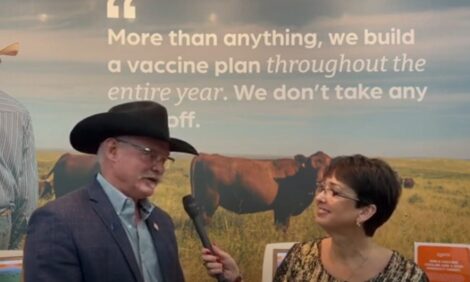



What are alternative feedstuffs for cattle?
K-State extension beef specialist shares tips to feed cattle more sustainablyThe term ‘alternative feedstuffs’ can mean a lot of different things, but in feeding cattle, it includes edibles not commonly found in the feed bunk.
K-State Research and Extension beef specialist Justin Waggoner uses soybean hay as an example. He said cattle producers don’t normally feed soybean hay, because soybeans are usually harvested as grain, but with recent drought conditions producers have been utilizing this alternative, Kansas State University extension beef cattle specialist Justin Waggoner said.
“This category of alternative feedstuffs is really broad and all encompassing,” Waggoner said. “Everything from cereal type breakfast products to chili pepper, and salsa waste that would come out of a salsa factory, (and) even nut hulls. So it's really a broad category that I think is sometimes hard to define.”
Waggoner says his discussion with producers includes knowing what products were applied to the soybeans and how the product was produced.
“We really have to understand the process of how the product was produced, (including whether there) are any artifacts or chemicals from production,” Waggoner said. “Maybe it's even the cleaning process of that factory.”
What to consider
When looking for alternative feedstuffs, he said its important to evaluate if there is something that could be a concern in the product. The other side of evaluation is logistics and knowing how much of the product is going to produced and what the delivery expense will be in addition to how the product is handled, stored and delivered.
“A few years ago a producer was looking at cull produce waste that was gathered out of grocery stores in large metro areas,” Waggoner said. “So then you look at whether the product is something that we need to feed within a week, or is it something whereby we can create a system to store that product on farm and maybe get a larger volume of that product delivered.”
Product packaging is also a factor in alternative feedstuff selection. “Some of that packaging would need to be removed prior to feeding; some packaging we can process but it may pass through the animal into manure,” he added.
Geography also plays a role in the use of alternative feedstuff. Waggoner said many products are regionalized and not accessible to every producer. Poultry litter is considered one of many regionalized products that various cattle producers have access to in Kansas.
“We do see some bakery product waste that comes out of some factories and the analysis on those is always pretty favorable,” Waggoner said. “There's really a gamut of products that are out there and it just kind of depends on the scale and the volume of those products that might be available.”
“I advise producers to do a complete analysis of the products that are out there,” Waggoner said. “That includes both the macro as well as the micro minerals and in some cases, we've also had some producers find some interesting elements like heavy metals that are likely a byproduct of the production process or some artifact of the process.”
Waggoner suggests producers interested in alternative feedstuffs reach out to their local extension agent to get in contact with a specialist or a nutritionist that's familiar with how to evaluate these products.


